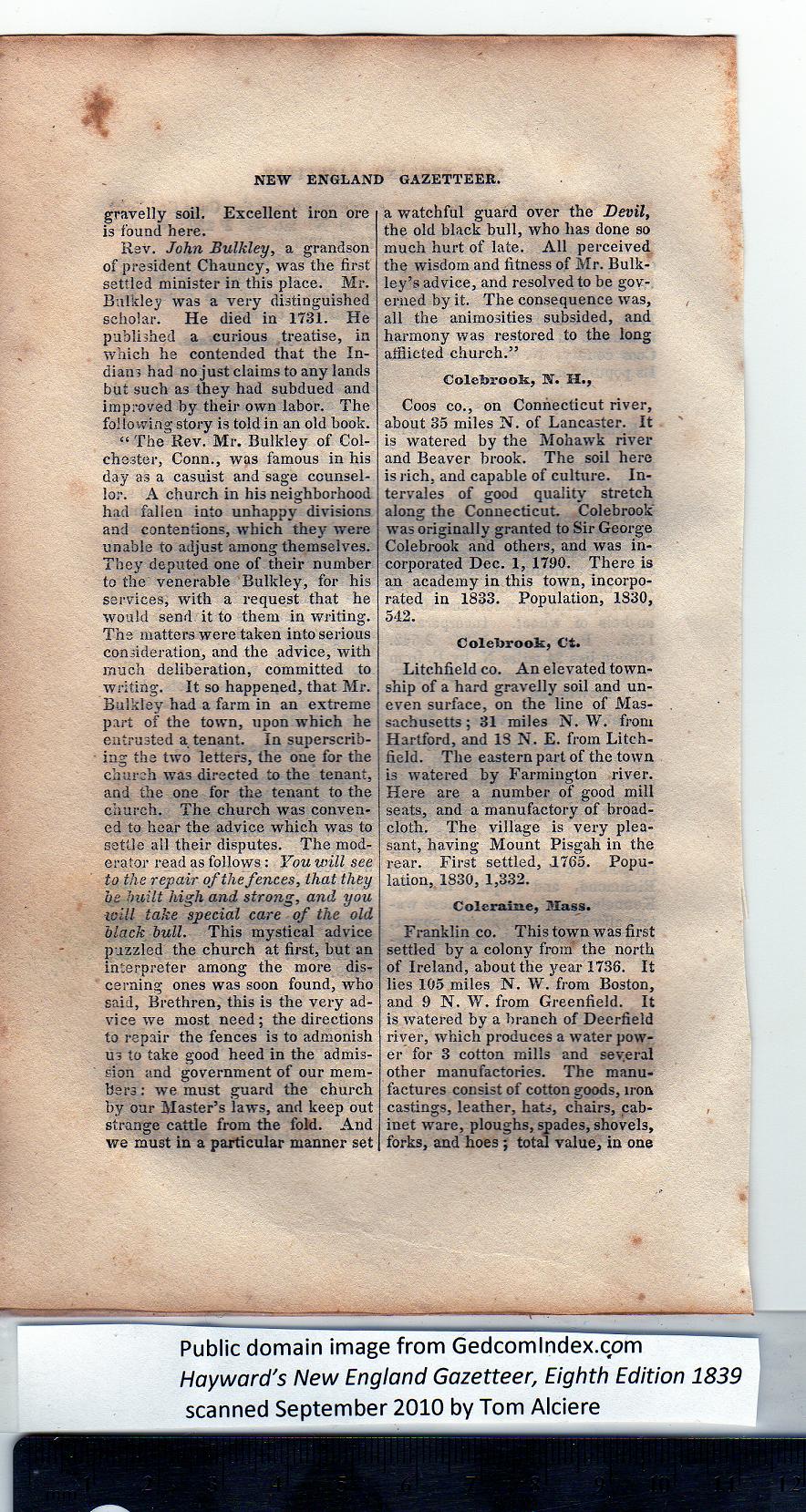|
gravelly soil. Excellent iron ore
is found here.
Rev. John Bulkley, a grandson
of president Chauncy, was the first
settled minister in this place. Mr.
Bulkley was a very distinguished
scholar. He died in 1731. He
published a curious treatise, in
which he contended that the In-
dians had no just claims to any lands
but such as they had subdued and
improved by their own labor. The
following story is told in an old book.
“ The Rev. Mr. Bulkley of Col-
chester, Conn., was famous in his
day a.s a casuist and sage counsel-
lor. A church in hi3 neighborhood
had fallen into unhappy divisions
and contentions, which they were
unable to adjust among themselves.
They deputed one of their number
to the venerable Bulkley, for his
services, with a request that he
would send it to them in writing.
The matters were taken into serious
consideration, and the advice, with
much deliberation, committed to
writing. It so happened, that Mr.
Bulkley had a farm in an extreme ;
part of the town, upon which he :
entrusted a tenant. In superscrib-
ing the two letters, the one for the
church was directed to the tenant,
and the one for the tenant to the
church. The church was conven-
ed to hear the advice which was to
settle all their disputes. The mod-
erator read as follows: You will see
to the repair of the fences, that they
he built high and strong, and you
■will take special care of the old
black bull. This mystical advice
puzzled the church at first, but an
interpreter among the more dis-
cerning ones was soon found, who
said, Brethren, this is the very ad-
vice we most need; the directions
to repair the fences is to admonish
us to take good heed in the admis-
sion and government of our mem-
bers : we must guard the church
by our Master’s laws, and keep out
strange cattle from the fold. And
we must in a particular manner set
a watchful guard over the Devil,
the old black bull, who has done so
much hurt of late. All perceived
the wisdom and fitness of Mr. Bulk-
Iey’s advice, and resolved to be gov-
erned by it. The consequence was,
all the animosities subsided, and
harmony was restored to the long
afflicted church.” |
Colebrook, 3ST. H.,
Coos co., on Connecticut river,
about 35 miles N. of Lancaster. It
is watered by the Mohawk river
and Beaver brook. The soil here
is rich, and capable of culture. In-
tervales of good quality stretch
along the Connecticut. Colebrook
was originally granted to Sir George
Colebrook and others, and was in-
corporated Dec. 1, 1790. There is
an academy in this town, incorpo-
rated in 1833. Population, 1830,
542.
Colebrook, Ct.
Litchfield co. An elevated town-
ship of a hard gravelly soil and un-
even surface, on the line of Mas-
sachusetts ; 31 miles N. W. from
Hartford, and IS N. E. from Litch-
field. The eastern part of the town
is watered by Farmington river.
Here are a number of good mill
seats, and a manufactory of broad-
cloth. The village is very plea-
sant, having Mount Pisgah in the
rear. First settled, 1765. Popu-
lation, 1830, 1,332.
Coleraine, Mass.
Franklin co. This town was first
settled by a colony from the north
of Ireland, about the year 1738. It
lies 105 miles N. W. from Boston,
and 9 N. W. from Greenfield. It
is watered by a branch of Deerfield
river, which produces a water pow-
er for 3 cotton mills and several
other manufactories. The manu-
factures consist of cotton goods, iron
castings, leather, hats, chairs, cab-
inet ware, ploughs, spades, shovels,
forks, and hoes ; total value, in one |
